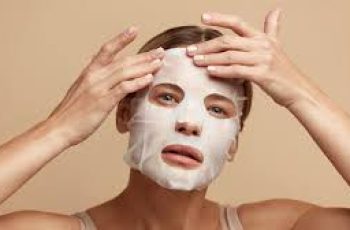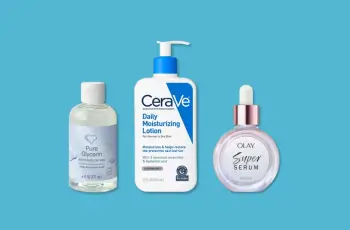
Glycation in skin
Glycation in skin is a complex process that can lead to skin aging. It begins when sugar molecules like glucose bind to proteins like collagen and elastin, creating advanced glycation end products (AGEs) [1]. This non-enzymatic reaction, also called the Maillard reaction, causes damage over time [2]. In skin, accumulated AGEs degrade collagen and elastin fibers, resulting in wrinkles and loss of elasticity [3,4]. Glycation also makes these proteins resistant to remodeling enzymes [5,6]. Additionally, glycation generates free radicals that contribute to further skin damage [7,8]. Preventing glycation requires reducing blood sugar levels through diet, exercise, and possibly medications like metformin. Overall, controlling glycation is key to maintaining youthful, healthy skin as we age.
Definition of Glycation
Glycation is essentially the reaction that makes food taste better through browning. It involves sugars binding to proteins, which is why it occurs when you toast bread or caramelize onions. The same process happens in our bodies as sugar molecules from foods react with proteins like collagen and elastin in skin. This reaction between sugars and proteins produces advanced glycation end products (AGEs). The accumulation of these AGEs over time leads to stiffening and crosslinking of collagen fibers, loss of elastin’s snap-back ability, and other effects that contribute to aged, damaged skin. So in a nutshell, glycation is like the Maillard browning reaction that chefs use for flavor, but inside the body it can have undesirable consequences over the long-term.
Skin Care Products
Once collagen and elastin are glycated, topical products cannot reverse the crosslinking and stiffness. Skincare ingredients do not have the ability to un-crosslink or detach sugar molecules from proteins . However, certain actives may help mitigate damage.
Retinoids boost desquamation, assisting with removal of abnormal fibers. Alpha hydroxy acids exfoliate the skin, aiding elimination of damaged matrix materials.
While skincare cannot undo existing glycation, select ingredients can potentially stimulate collagen turnover and processing of dysfunctional proteins. Skin care products that treat glycation either treat the glycation symptoms or help the skin get rid of the AGEs through autophagy. Then best product to treat skin glycation is the Alastin Regenerating Skin Nectar.
These products have been used to help target AGEs in skin:
Glycation in Skin
Glycation damages skin components which leads to thin, fragile, wrinkled and aged skin. Collagen and elastin are the skin proteins that are affected the most.
What is collagen
Collagen Glycation
Glycation negatively impacts collagen, a key structural protein in skin. When sugar molecules attach to collagen, crosslinks form between collagen fibers [1]. This crosslinking makes the collagen molecules rigid and unable to remodel properly [2]. Glycated collagen loses its strength and flexibility, leading to wrinkles and sagging [3]. The crosslinks also accumulate over time, progressively stiffening the collagen network. This reduced collagen flexibility impairs skin function and resilience. [4].
Elastin structure
Elastin Glycation
Elastin fibers are also vulnerable to glycation damage. Binding of sugar degrades the elastin protein structure [5]. Glycation of elastin makes the fibers resistant to degradation by elastase, causing buildup of abnormal elastotic material [6]. This leads to loss of snap-back capability in aged skin [7]. Glycated elastin is also linked to impaired fibroblast function, further deteriorating the extracellular matrix [8].
Preventing Glycation
You cannot remove AGEs very easily from skin except through autophagy, so it is best to try and prevent glycation from happening in the skin.
The best way to prevent glycation is to make sure you are using the best skin care routine for your skin type.
Antioxidants
Glycation reactions spurred by free radicals can amplify age-related skin damage. Reactive oxygen species propagate destructive oxidation reactions with glycated proteins [9]. Using topical antioxidants like vitamin C helps mitigate this oxidative stress and prevent some glycation [10].
[[T55,SP11,M48, T10]]
Sunscreens
Ultraviolet radiation from sunlight can exacerbate glycation processes in skin. UV exposure generates reactive oxygen species that interact with glycated proteins, propagating oxidative damage [7,8]. This leads to accelerated formation of advanced glycation end products (AGEs) like Nε-carboxymethyllysine and pentosidine [3]. UV light also causes crosslinking between proteins, and between proteins and sugars, creating AGE complexes that accumulate over time [9]. In addition, UV radiation impairs the glyoxalase enzyme which detoxifies precursors to AGEs, allowing more deleterious glycation reactions [5]. The combination of UV light and glycation magnifies destruction of collagen and elastin. Using sunscreen and limiting unprotected sun exposure can help defend against photoaging driven by glycation reactions.
Sunscreens with antioxidants can help prevent skin glycation.
[[S31,S32]]
Controlling Blood Sugar
Reducing blood sugar levels decreases glycation by limiting the amount of glucose available to bind proteins [1]. A low-glycemic diet and exercise help reduce glycation. Medications such as metformin, semaglutide (Ozempic, Wegovy) and tirzepatide (Mounjaro) help improve glycemic control.
Summary
Glycation can be mitigated through several strategies. Reducing blood sugar levels decreases glycation by limiting the amount of glucose available to bind proteins [1]. A low-glycemic diet, exercise, metformin, and semaglutide help improve glycemic control. Limiting UV exposure is also beneficial since sunlight spurs free radical glycation reactions [2]. Antioxidants like vitamin C combat these radicals, whether applied topically or consumed orally [3]. Other natural compounds like aminoguanidine and carnosine have anti-glycation effects [4]. Overall, decreasing blood sugar, avoiding excess sun exposure, and increasing antioxidant intake and use can help curb glycation and its impact on skin aging [5]. A multi-pronged approach targeting blood sugar, oxidation, and direct anti-glycation agents offers the most comprehensive defense against this process.
Start by making sure your skin care routine is right for your Baumann Skin Type.


